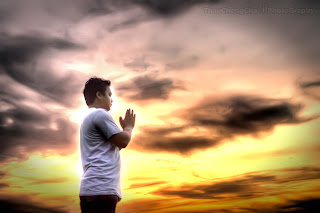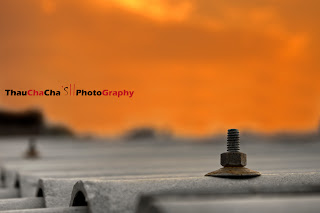I've faced many questions about my photography......and one of the most common subject of the questions is HDR photography.....many of my friends think that HDR photographs are just some fake effects introduced in my photographs by using some software.....it sounds like "digital arts"....
Though I dont know much about Digital art, but I can tell you that there is a vast difference between Photography and Digital art......
so today I'm gonna write here about what I know and think about HDR Photography.
meaning of HDR
HDR means HIGH DYNAMIC RANGE PHOTOGRAPHY......just search in Google, you'll find a hundreds of blogs and pages on HDR......but here I'm talking about what I know and What I think......HDR is a part or category of Photography like Macro, General Life, Street, People etc.....HDR is all about Light and Color....It shows that colors and lights which human eyes unable to see or detect.....It's a summation of both Creative mind and Technology....These two things you must need to make a HDR image.....
PROCEDURE of making HDR
1. choose a subject where light (a bulb light is not enough, I'm talking about sunlight) is in the background or light creates a highlighted effect on the background, like highlighted clouds...
2. take three or more images of the same subject without changing the position of either camera or the subject in different exposure values, like +2, 0, -2 or +2, +1, 0, -1, -2.....(I usually take three images).
3. Marge them with software like PhotoMatix or Photoshop CS5 into a single image.
Now, the single image has the all colors and Light that you need and this is HDR.......
three EXPOSURE values
Let's assume that you'll shoot in 0 exposure value, it will only give you the lights and colors of the subject. But when you'll shoot in three or more different exposure values, the 0 exposure value will give you the object in desired form and other + ve and -ve exposures will give you the light and colors of the surrounding, which will definitely help you to present your subject more effectively according to the theme.
know about CAMERA
It's very simple, but difficult to explain. I prefer DSLR (Digital Single Lens reflacted) cameras. This is a time of technology, technology gives us the grip on perhaps every sectors, Photography is not an exceptional one. DSLR has many advantages. But today's topic is HDR, so let me tell you advantages of DSLR in HDR photography-
1. It has "autoexposurebracketing", means you can set the desired three or more exposure values at once, means you need not to change exposure value after every shoot.
2. It can also save the image file in both RAW and JPG. JPG is the most common image file format of 8 bit and RAW is like a camera negative image file format of 12 bit. So you can see that a RAW will keep lot more information of light, color and subject more than JPG.
highly RECOMMENDED factors by Professionals
1. use a tripod while shooting and avoid moving subjects.
2. Shoot in RAW.
some useful TIPS from me
1. Images can be converted from JPG to TIF file format of 16 bit by using Photoshop and other converters. So you dont need to worry about RAW file or DSLR. so, I highly recommended you to convert either JPG or RAW files in 16 bit TIF file.
2. If you dont have a Tripod, use your bag or something that available around you, like rocks, brick, wood etc to place your camera while shooting. (I frequently use this method as I dont have a tripod).
3. You can make a HDR from single image (but it reduces the image quality). Make three or more copies of the image and edited them to desire exposure values by using Photoshop or other software, then marge them.
These are the important things that you need to know accurately about HDR Photography........
Some EXAMPLES with explanation
1. Before the Dark
Location :- Sivsagar, Assam (India)
Camera :- Nokia N95
f/2.8 | 1/500 sec | ISO 100|JPG
First time I made HDR photograph from a single image, and you're not gonna believe that that image was taken by a cell phone camera, Nokia N95....so as you know a cell phone camera can only shoot in JPG format...now you can compare this image with others, you'll see the difference difference.
2. World Through my Window
Location :- Batinda, Punjab (India)
Camera :- Canon EOS 500D (18-55 mm lens)
f/11.3 | 1/395 sec | ISO 200 | +2 0 -2 | RAW(.CR2)
In this photograph, there's no light source on the background, therefore, though it's a HDR image, but dont has the dramatic look.....
3. World Through my Window 2
Location :- Batinda, Punjab (India)
Camera :- Canon EOS 500D (18-55 mm lens)
f/9.9 | 1/395 sec | ISO 200 | +2 0 -2 | RAW(.CR2)
This Image was clicked in same location, but different time and angle, since the light was in the background, you can see the dramatic effect of light and the clouds......
some other Photographs on HDR
1. Colored Bangles
Location :- Kampur, Assam (India)
Camera :- Canon EOS 500D (18-55 mm lens)
f/4 | 1/50 sec | ISO 200 | +1.7 0 -1.7 | RAW(.CR2)
2. Moments to Remember
Location :- Kampur, Assam (India)
Camera :- Canon EOS 500D (18-55 mm lens)
f/5.6 | 1/200 sec | ISO 200 | +1.3 0 -1.3 | RAW(.CR2)
3. Long Exposure
Location :- Batinda, Punjab (India)
Camera :- Canon EOS 500D (18-55 mm lens)
f/36.4 | 32 sec | ISO 200 | RAW(.CR2)
Processed from Single Image
4. Have Some Fun !!!!
Location :- Batinda, Punjab (India)
Camera :- Canon EOS 500D (18-55 mm lens)
f/6.9 | 1/99 sec | ISO 200 | +2 0 -2 | RAW(.CR2)
5. Bi-Colored
Location :- Batinda, Punjab (India)
Camera :- Canon EOS 500D (18-55 mm lens)
f/5.7 | 1/513 sec | ISO 200 | +2 0 -2 | RAW(.CR2)
6. Two Worlds
Location :- Batinda, Punjab (India)
Camera :- Canon EOS 500D (18-55 mm lens)
f/9.9 | 1/1031 sec | ISO 200 | +2 0 -2 | RAW(.CR2)
7. Place of God 1
Location :- Batinda, Punjab (India)
Camera :- Canon EOS 500D (18-55 mm lens)
f/14.1 | 1/128 sec | ISO 200 | +2 0 -2 | RAW(.CR2)
8. Place of God 2
Location :- Batinda, Punjab (India)
Camera :- Canon EOS 500D (18-55 mm lens)
f/14.1 | 1/198 sec | ISO 200 | +2 0 -2 | RAW(.CR2)

























































